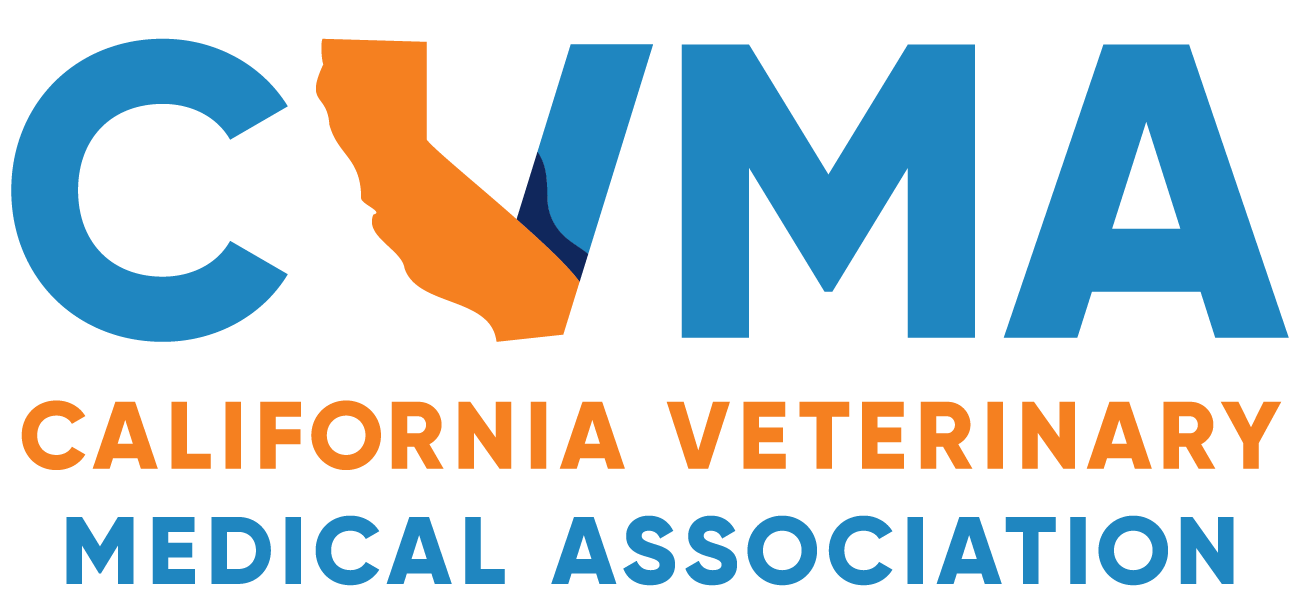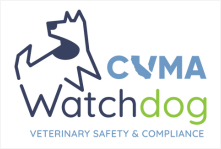December, 2023
The CVMA supports the use of telemedicine for cases in which it can be used safely and appropriately, and at a standard consistent with current veterinary medical practice in this state. In accordance with California’s telemedicine law veterinarians who use telemedicine are held to the same standard of care that is expected of them when seeing patients in-person. California Business and Professions Code section 4826.6(c)(1) states: “The same standards of care apply to veterinary medicine services via telehealth and in-person veterinary medical services.” Given that veterinarians practicing via telemedicine cannot physically examine animal patients, this legal requirement makes the use of telemedicine risky from both general liability and administrative law standpoints. When investigating and enforcing telemedicine-related complaints, the state Veterinary Medical Board (CVMB) will not consider a separate (lower) standard of care for these cases; but rather will expect veterinarians to practice at the same level as if patients were seen in-person.
In consideration of the statement above, the CVMA recommends that:
• Telemedicine only be used to diagnose new conditions in patients when a previous in-person physical examination or medically appropriate and timely visit to the premises where the animals are kept has/have occurred in such time as good standards of medical practice dictate.
• Telemedicine only be offered if the veterinarian providing the service is associated with a California-registered veterinary premises that is capable of seeing the animal patient in-person if the need arises.
• All prescriptions issued via telemedicine be limited to 14 days and that refills only be given following an in-person examination of the animal patient. (California Business and Professions Code section 4826.6(g)(5) is explicit in this limitation for antibiotic prescriptions.)
• Veterinarians who utilize telemedicine to establish a Veterinarian-Client-Patient Relationship (VCPR) should check with their insurance provider to ensure that adequate liability coverage is included in their policy.
• The quality of the synchronous audio-video communication should be adequate, and both the veterinarian and client should have sufficient proficiency in using technology to conduct an appointment.
• The animal patient and client should be visible to the veterinarian in the synchronous audio-video appointment.
• If possible, the synchronous audio-video appointment should be recorded and retained as part of the patient medical record.
View California’s telemedicine law here.
Veterinarians who opt to use telemedicine must also observe the following:
1) California law prevents corporations and non-veterinarian individuals from influencing the way veterinary medicine is practiced. The CVMB has legal enforcement authority against non-licensed individuals or corporations that interfere in any way with the professional judgment of a veterinarian. This includes pressure to follow pre-written treatment protocols and pressure to prescribe and sell select drugs. The following sections of the California Business and Professions code are explicit: 4854.1, 4853(g), and 4883(t).
2) If a client requests a written prescription, veterinarians are now mandated to either give the prescription to the client, or submit the prescription directly to a pharmacy of the client’s choosing. California Business and Professions code section 4826.6(i)(7) states: “The veterinarian shall notify the client that some prescription drugs or medications may be available at a pharmacy and, if requested, the veterinarian shall submit a prescription to a pharmacy that the client chooses.” California Business and Professions Code section 4170(a)(6) states: “The prescriber, prior to dispensing, [must] offer to give a written prescription to the patient that the patient may elect to have filled by the prescriber or by any pharmacy.” Therefore, veterinarians now are obligated to abide by both laws and act according to the client’s request, regardless of whether an appointment is conducted via telemedicine or in-person.
3) If a veterinarian uses telemedicine to establish a VCPR, it may only be used on pets located in California. California Business and Professions Code section 4826.6(f) indicates that in order for a VCPR to be established via telemedicine, it is contingent upon the patient being located in the state of California. The statute specifically states, “Only a person who holds a current license to practice veterinary medicine in this state is authorized to practice veterinary medicine via telehealth on an animal patient located in this state.”
4) The Financial Interest Disclosure requirement still applies to telemedicine practice. While California’s telemedicine law does require veterinarians to provide several specific notices and disclosures to clients, it does not mention a pre-existing requirement that also applies. That requirement is found in California Business and Professions Code section 654.2: Financial interest disclosure obligation.
5) California has a judicious use of antibiotics mandate and continuing education requirement for veterinarians. California veterinarians are mandated to complete one unit of continuing education every four years on the judicious use of antibiotics. (California Business and Professions Code section 4846.5(k)(1).) This is part of California’s legislative effort to curb antibiotic resistance. For food-producing animals, California Food and Agriculture Code section 14402 is explicit in stating limitations for antibiotic prescriptions. The CVMB can and does pursue veterinarians for the non-judicious provision of antibiotics. Grounds for doing so may include: over-prescription of antibiotics in amount, strength, and/or duration, choosing a sub-optimal type or class of antibiotics, providing antibiotics without justification through adequate physical exam findings or laboratory testing, and others.
6) California telemedicine law limits the prescription of antimicrobials to 14 days. This includes all types of antibiotics, including topical, parenteral, ophthalmic and oral.
7) Any drug prescribed pursuant to federal Extra Label Drug Use (ELDU) regulations and the Animal Medicinal Drug Use Clarification Act (AMDUCA) requires an in-person examination of the patient. Federal law permits veterinarians, in accordance with their professional judgment and federal regulations, to prescribe drugs in an off-label manner. Off-label drug use is any deviation from what is written on the label and includes use: in a different species (such as drugs labeled for human use, including generics), for a different medical indication, at a different dose, by a different route, or at a different frequency of administration. As the authority to prescribe drugs off-label is a federal, not state, prescribing authority, the federal definition of a VCPR must be followed when prescribing under this federal authority. AMDUCA states, “Extralabel use of drugs may only take place within the scope of a valid VCPR.” ELDU regulations define a VCPR to include the requirement that, “…the veterinarian has recently seen and is personally acquainted with the keeping and care of the animal(s) by virtue of examination of the animal(s), and/or by medically appropriate and timely visits to the premises where the animal(s) are kept.” Furthermore, the federal Food and Drug Administration (FDA) states that, “… a VCPR cannot be established solely through telemedicine (e.g., photos, videos, or other electronic means that do not involve examination of the animal(s) or timely visits to the premises).” See supporting documentation here and here. Therefore, veterinarians who utilize telemedicine to establish a VCPR are restricted to only prescribing drugs according to their labeled instructions. No extra-label prescribing is permitted unless an animal patient has been seen in-person or the veterinarian has made medically appropriate and timely visits to the premises where the animals are kept.
8) Telemedicine may not be used to establish a VCPR that involves the prescription of a Drug Enforcement Administration (DEA) Scheduled Drug (a.k.a.: “controlled substance”). California Business and Professions Code section 4826.6(i)(6) states, “The veterinarian shall not order, prescribe, or make available a controlled substance, as defined in Section 4021, or xylazine,
unless the veterinarian has performed an in-person physical examination of the animal patient or made medically appropriate and timely visits to the premises where the animal patient is kept.”
9) Veterinarians providing telemedicine services to equine clients must determine if the patient(s) are engaged in horse racing. California Business and Professions Code section 4826.6(i)(8) states, “A veterinarian shall not prescribe via telehealth any drug or medication for use on a horse engaged in racing or training at a facility under the jurisdiction of the California Horse Racing Board…” Therefore, any veterinarian establishing a VCPR for equine patients via telehealth must inquire about the racing status of the patient and avoid prescribing for racing patients.
10) Telemedicine may not be used to issue Certificates of Veterinary Inspection (“Health Certificates”) or to carry out any other duties performed as a USDA NVAP-accredited veterinarian. United States Department of Agriculture National Veterinary Accreditation Program (USDA NVAP) requires that animals be examined in-person to fulfil requirements that determine an animal’s fitness to travel.
(December, 2023)






